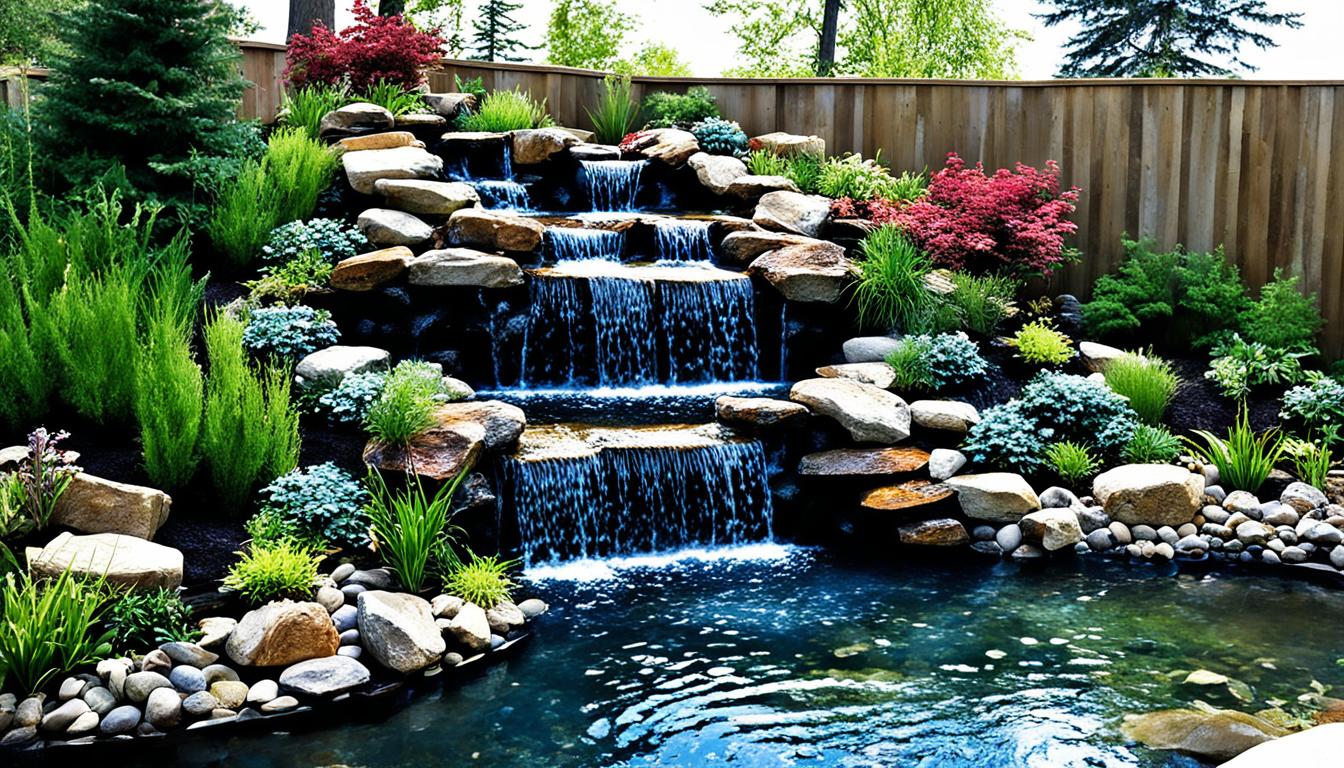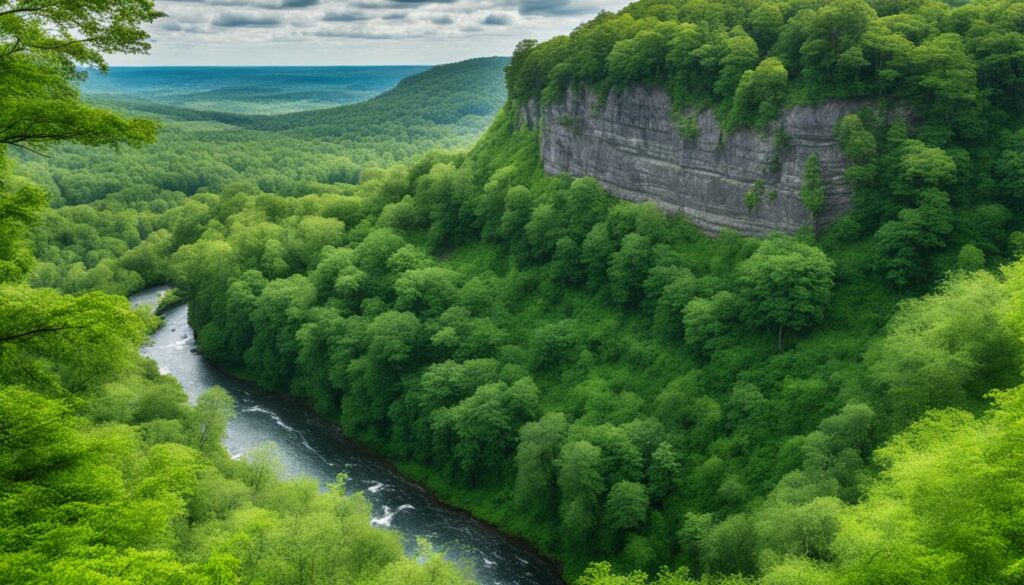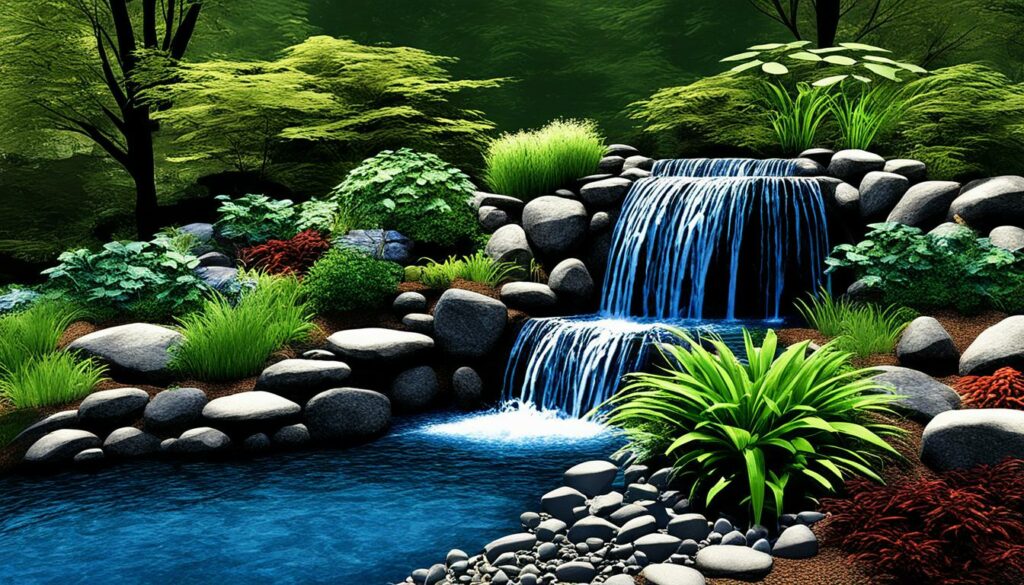
Crafting an outdoor waterfall can significantly enhance your backyard's ambiance and aesthetic appeal. The process of constructing a backyard waterfall involves careful planning and execution, ranging from choosing the correct materials to finalizing the design and adding water features. This guide will detail each step, providing a pathway for homeowners to create their tranquil paradise.
By using locally sourced rocks and materials, and incorporating personal touches through plant life and lighting, you'll be able to construct not only a functional water feature but also an inviting natural retreat within your own garden space.
Whether you're new to garden waterfall design or seeking to refine a current setup, this guide aims to simplify the process. From the initial backyard waterfall construction to detailed DIY backyard water feature tips, follow along for an enriching outdoor waterfall installation experience.
Gathering Materials and Tools
Constructing a backyard waterfall is a rewarding project that begins with assembling the right materials and tools. Ensuring you have everything in place from the start will streamline the construction process and help you avoid unnecessary delays.
Essential Equipment and Supplies
When gathering backyard waterfall materials, think about the specific components that will bring your vision to life. Here's a list of essential items you'll need:
- Stones, such as bluestone, for a natural look
- A large, flat base stone
- Crushed stone for the foundation
- Pond liner to retain water
- Connecting hoses for water circulation
- Waterproof adhesive and sealant
Choosing the Right Pump
The heart of any waterfall is its flow of water, making the water pump selection a critical aspect. Selecting a pump with a minimum flow rate of 300 gallons per hour and a lift capacity of at least 6 feet is essential for creating a consistent and strong waterfall effect. Additionally, determine whether you need an electrical or solar-powered pump based on your backyard's accessibility to power sources.
Don't overlook the importance of a GFCI outlet to protect against electrical hazards. Alternatively, a low-voltage pump with a transformer can be utilized for easier and safer installation.
Safety Considerations
Prioritizing waterfall construction safety is of utmost importance. Always wear protective gear like gloves and safety glasses when handling stones and heavy materials. Make sure your work area is clear of obstructions and lit well enough to see hazards clearly. Remember, following safety instructions and local building codes throughout the project ensures not only a successful but also a secure waterfall construction.
“At the end of the day, safeguarding yourself and anyone who may use the waterfall is as crucial as the beauty you're aiming to create,” emphasizes landscape expert Bob Vila.
Choosing the Perfect Location
When planning your backyard waterfall, selecting the optimal site is crucial to maximizing its aesthetic and functional benefits. Considerations include space availability, natural landscape features, and proximity to a power source for the pump. Ensuring the waterfall's location complements your existing garden layout is essential for seamless integration.

Factors to Consider
Several factors should guide your waterfall location planning:
- Space Availability: Assess the amount of space you have to work with, as this will determine the size and design of your waterfall.
- Natural Landscape Features: Look for areas that naturally lend themselves to water features, such as slopes or existing rock formations.
- Proximity to Power Source: Ensure the waterfall is close to a power source for the pump, which is vital for maintaining continuous water flow.
- Visual and Auditory Experience: Position the waterfall where it can be best enjoyed visually and for its calming sound, whether from a patio, kitchen window, or outdoor seating area.
Creating a Water Source
If a natural water source is absent, water source creation becomes necessary. This can be achieved by establishing a water reservoir using a prefabricated rigid liner or flexible pond liner. Prior to digging, ensuring the absence of utility lines below ground is vital to avoid any construction damage.
Proper backyard water feature placement not only enhances the visual appeal but also increases the property's value. Creating a water reservoir appropriately will safeguard against leaks and ensure a consistent water supply for the waterfall.
Designing Your Waterfall
Designing a backyard waterfall is an exciting endeavor that blends creativity with technical know-how. The process involves several crucial steps to ensure the final result is both functional and visually stunning. This section delves into waterfall design planning, taking into account the selection of rocks and the integration of plant life.
Planning the Layout
Effective waterfall design planning starts with a well-thought-out layout. A balanced design can greatly enhance the aesthetic appeal. Consider the placement of various rock sizes to create a natural flow. Flat rocks with sharp edges can be strategically positioned to guide water effectively, crafting a natural, cascading effect.
Using Natural vs. Artificial Rocks
One of the pivotal decisions in the design process is choosing between natural rock selection and artificial rocks for waterfalls. Natural rocks offer unparalleled authenticity and variety. However, artificial rocks for waterfalls present a versatile and often cost-effective alternative. Homeowners can craft these rocks from concrete and molds, personalizing their waterfall's appearance.

Incorporating Plant Life
Integrating plant life into water features is essential for creating a dynamic and lifelike waterfall. Plants not only enhance the visual appeal but also contribute to a balanced ecosystem. Select native plants that thrive in moist environments to ensure longevity and ecological harmony. Whether opting for ferns, mosses, or aquatic plants, each choice should complement the overall theme and layout of your waterfall.
Building the Waterfall Structure
As you transition from planning to execution, constructing the waterfall framework becomes your first critical step. This phase requires meticulous attention to detail and expertise in constructing solid foundational supports. Typically, this involves using pressure-treated lumber or construction-grade materials, ensuring that all levels are precisely aligned to maintain the stability and balance of your waterfall structure.
Constructing the Frame
The initial stage involves crafting a durable frame to support all elements of your waterfall. It is essential to utilize pressure-treated lumber due to its longevity and resistance to moisture. All framework components must be measured and aligned accurately, supporting not just the weight of the decorative elements but also the constant water flow. Insulating foam may be incorporated in strategic areas to enhance durability and structure integrity.
Installing the Pond Liner
Pond liner installation is another paramount stage in building your waterfall. Begin by laying out the liner in the designated pond area, ensuring an extra padding section at the center for reinforcement. Secure the liner firmly with concrete blocks around the edges. This process not only shapes the pond but also prevents water leakage, enhancing the overall longevity of your structure. Make sure that the liner is smoothly installed without any wrinkles to facilitate an uninterrupted water flow.
Creating the Waterfall Cascade
Creating the waterfall cascade involves a careful arrangement of rocks and stones to shape the water flow steps. This intricate process includes layering various sizes of rocks, supported by a mix of cement to ensure a seamless water journey over the cascade. As part of the DIY waterfall construction techniques, take special care to design each step thoughtfully to mimic natural water movement. Additionally, a final skim coat of concrete over critical areas reinforces the structure, ensuring sturdiness and a lasting visual appeal.








